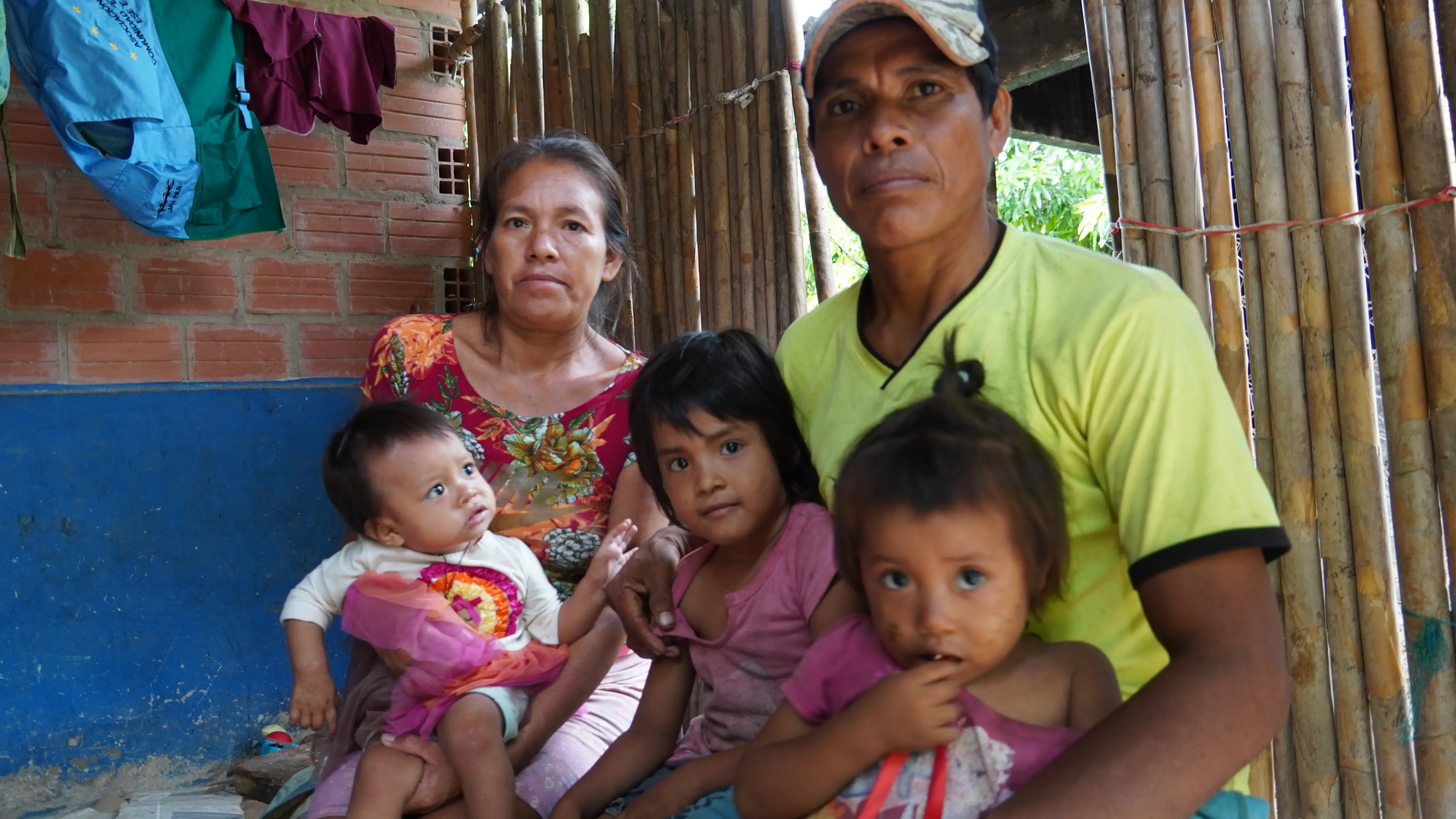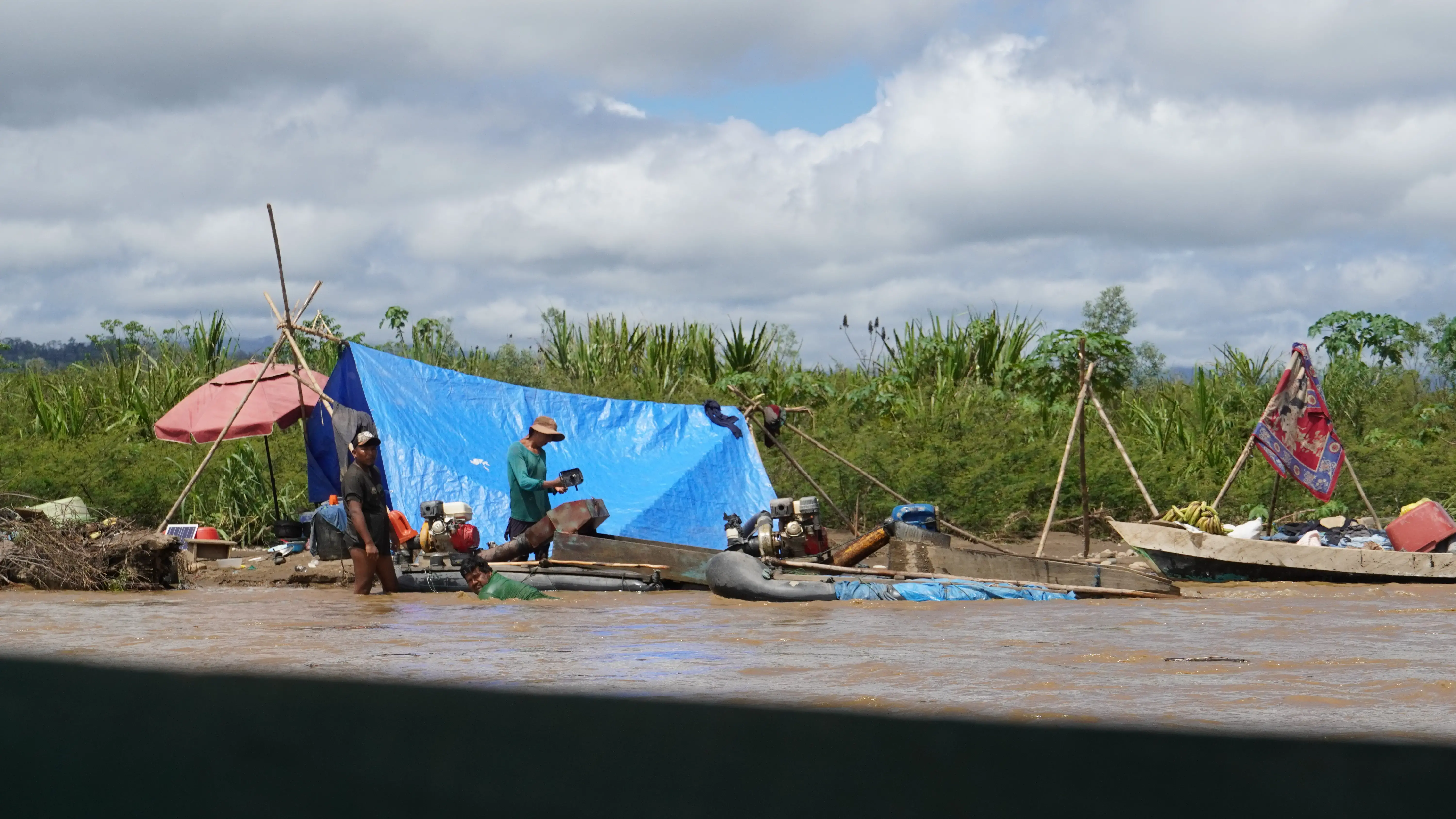
People who live along rivers in the Amazon basin have severe neurological symptoms and dangerously high levels of mercury in their bodies because of pollution from gold mining
The river Beni, which springs from the highlands of La Paz in Bolivia and snakes down into the Amazon basin, is the lifeblood of the Esse Ejja community. “We eat all kinds of fish, big or small, every day,” says Apolinar Ocampo. “We don’t have anything else to eat.” But the fish they catch are poisoning them.
Mercury is key to alluvial gold mining, a practice that is booming in Bolivia. Miners dredge up sediment, then add liquid mercury so it forms a coating around the gold particles in the silt. Later, microbes in the water and soil transform the toxic metal into methylmercury, which ends up in the bodies of fish and other animals. It passes up the food chain, becoming 10 times more concentrated at every step.
This is having a devastating impact on the Esse Ejja, whose name means “people of the river”, and other riparian Indigenous peoples in northern Bolivia. Oscar Campanini at the Bolivian Documentation and Information Center and his colleagues collected 865 human hair samples from the communities living in the basins of the Beni, Madre de Dios and Mamoré rivers.

As a nonprofit journalism organization, we depend on your support to fund journalism covering underreported issues around the world. Donate any amount today to become a Pulitzer Center Champion and receive exclusive benefits!
Almost 90 per cent of them registered mercury levels exceeding 1 microgram per gram, the safe limit established by the World Health Organization and other international agencies, with some tests reaching levels as high as 114.4 μg/g. The data is expected to be published fully later this year.
“We knew there was a problem because of all the studies that had been carried out in various areas of these rivers,” says Campanini. “But we did not imagine that the scope and intensity was so high.”
Methylmercury causes a wide range of neurological symptoms. Esse Ejja villagers complain of aches in their bodies and heads, memory loss and confusion, as well as vomiting and diarrhoea. One man, Carlos Sosa, with a test registering 13.6 μg/g of mercury, says he is unable to sleep due to constant pain and uncontrollable tremors.
A study in 2021 found dangerously elevated levels of mercury in women in Brazil, Venezuela and Colombia, but the highest levels by far were seen in Bolivian women, averaging nearly eight times the safe limit. High mercury levels during pregnancy can impair neurological development in fetuses.
Ocampo, who has eight children, says they struggle to learn at school. “When the teacher says do this or that, they don’t get it. My daughter is 5 years old and she barely speaks.”
His wife, Cristina Torres, had mercury levels of 6.35 μg/g, more than six times higher than the safe limit. “Before we used to give birth at home; now, we all have to go to the clinic,” she says. She needed a Caesarean section for her last child, who was born underweight and has anaemia.
“The problem of cognitive deficits is very severe,” says Roger Carvajal at the Higher University of San Andrés in La Paz, Bolivia. “We presume that a whole generation of children, teenagers and young adults will have learning difficulties.”

Since 2013, Bolivia has been a signatory to the Minamata Convention on Mercury, an agreement of 128 countries to curb or eliminate almost all uses of the metal, including in small-scale gold mining, and to protect vulnerable populations from contamination. But the state is doing little to mitigate the Amazon gold boom’s toxic fallout.
Between 2015 and 2019, Bolivia imported a staggering total of 990.9 tonnes of mercury. Imports fell from the 2019 peak to 91.66 tonnes in 2021, but this still puts it among the top five importers in the world, according to World Bank data.
It is also a hub for the resale of the metal to neighbouring countries, says Miroslava Castellón, who works for Bolivia’s vice ministry of environment as manager of the persistent organic pollutants programme. But since June 2023, mercury imports have had to be registered and authorised by the mining ministry, she says. She added that a national plan to phase out its use is in place, though no reduction targets have been set yet.
It is no coincidence that gold has become Bolivia’s principal export. In 2022, the country exported 52.25 tonnes of gold worth $3.2 billion, nearly eight times the amount in 2011. Politically powerful, unionised mining outfits called “cooperatives” account for virtually all the gold production.
“Here, there is a lot of gold, but there is also a lot of poverty,” says Pablo Camacho, a doctor at the health centre in Mayaya, a mining town on the Kaka river. He has seen multiple health problems in Indigenous communities, including low birth weights and babies born with missing fingers, unformed outer ears and cleft palates.
“There is a pact of silence,” he says. “The miners know about it, but say nothing. They only care how many kilos of gold they get, how will they buy new machinery and where will they go next.”









